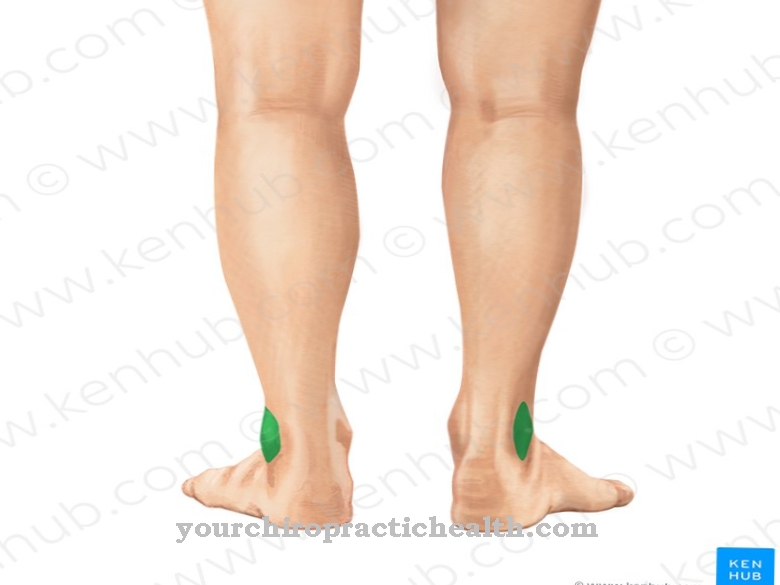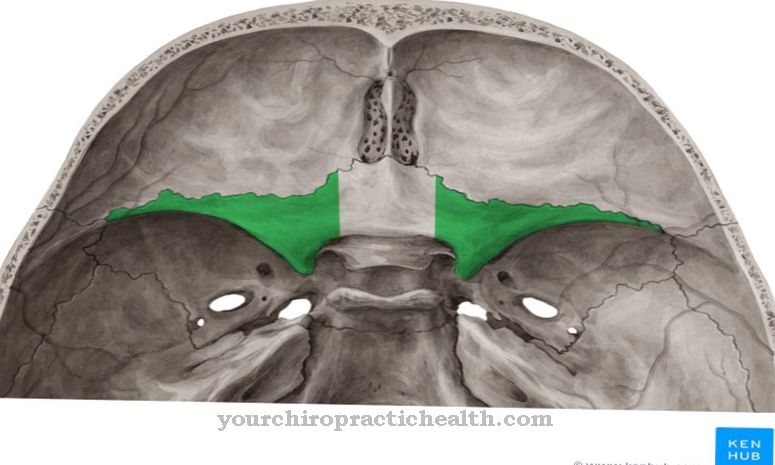The function of the Feet is as often underestimated as the diseases that can affect them. With evolution, the feet have anatomically adapted to walking upright. According to studies, people's foot shapes differ depending on the region and country.
What are the feet
The Latin term for feet is “pes”. They describe the movable units in land vertebrates and humans that are seated at the end of the lowest leg section. The feet consist of the tarsus, the metatarsus and five toes.
Anatomically, due to the evolutionary adaptation, they are very complex and take on different functions. Often times, they are one of the parts of the body that receives the least attention. This means that diseases and complaints in the area of the feet are not uncommon. There are typical foot diseases in men and women. This has to do with footwear and different personal hygiene.
Anatomy & structure
The feet consist of a bony frame, the surrounding muscles, ligaments and tendons. The metatarsus consists of the ball of the foot, the sole, the heel, the back of the foot and the outer edge. The back of the foot is called the instep.
The medically used term for the outer edge is instep. The Latin term for the toes is digiti pedis, while the tarsus is called the tarsus and the metatarsus is called the metatarsus.
Each foot consists of 26 bones and two so-called sesame legs. Sesame bones are bones embedded in tendons that serve as additional spacers. This means that the foot contains just under a quarter of the 206 to 215 bones that are in the human body.
In the area of the muscles, there are long and short muscles of the foot. The former start on the thigh, while the short foot muscles are located on the foot skeleton itself.
Different foot shapes are distinguished based on the ratio of the second toe to the big toe. If the second toe is shorter, the doctor speaks of an Egyptian foot. The Greek foot is a foot with a longer big toe. On a Roman foot, both toes are the same length.
Function & tasks
The arch of the foot is maintained by ligaments. The longitudinal and transverse arches bear the weight of the body via the heel, ball of the big toe and ball of the little toe. While the heel bears around 33% of the body weight, the ball of the foot takes on around 30%. 15% fall on the outer edge of the foot. The rest is distributed on the toes. On average, the big toe takes over 5%, while the other toes carry the remaining 7%.
The fat on the sole of the foot has a cushioning effect. It cushions the weight while running and prevents impact damage to the spine and joints. The foot muscles, in turn, are responsible for the movement of the foot. The high density of receptors in the soles of the feet and toes regulates the sense of touch. While grasping with the feet has receded in humans, the apes, related to us, use the feet for this purpose.
In humans, the feet are responsible for walking upright. A large part of the balance regulation is done by the feet. For example, people who lose their little toes in an accident have difficulty walking in the beginning. They lack the lateral receptors that prevent twisting.
Illnesses & ailments
The complaints and clinical pictures that affect the feet range from infections to inflammation and deformations. In most cases, those affected are to blame for the symptoms themselves. Frequent wearing of unsuitable shoes can deform the feet.
These include, for example, bony extensions of the heel bone (heel spur) and the so-called hallux valgus. This is a kink of the big toe towards the other toes. Flat, arched and splayfeet affect the arch of the foot. They are based on a lowering of the vault. If the arch of the foot is too pronounced, the doctor speaks of a pes cavus or pes cavus. Another name is pes excavatus.
Everyday complaints include calluses and ingrown or brittle toenails. Incorrect cutting or filing of the nails often leads to inflammation of the nail bed or the surrounding skin. If the protective barrier of the feet is damaged, fungal infestation (athlete's foot) is not uncommon. The risk of infection is particularly high in public wet rooms such as swimming pools or saunas. The warm, humid climate that prevails in shoes in summer encourages the spread of germs.
Corns are favored by tight shoes. In percentage terms, they occur more frequently in women. Tumors can also develop in the area of the feet. Specialists in medicine call neuromas tumors made of connective tissue and fat cells. Regular foot massages and comfortable shoes can help prevent illness. Regular barefoot walking strengthens the feet. Special gel inserts ensure that new shoes are more comfortable to wear.



























